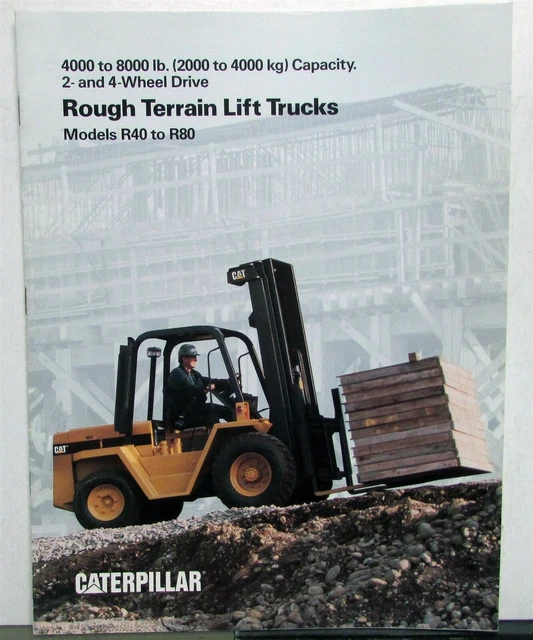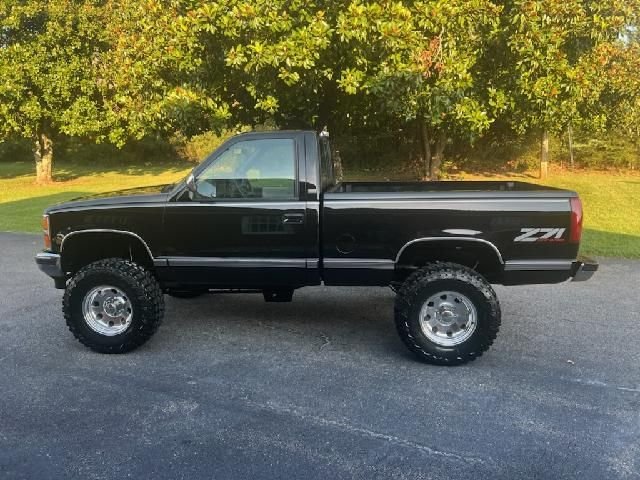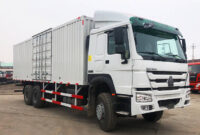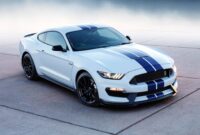1980 To 1990 Trucks For Sale: A Comprehensive Guide to Buying Your Next Classic Workhorse pickup.truckstrend.com
In the ever-evolving landscape of automotive trends, there’s a distinct period that continues to capture the hearts and imaginations of truck enthusiasts: the 1980s. The decade of big hair, synth-pop, and robust machinery produced a generation of trucks that blend rugged utility with a burgeoning sense of style and comfort. For many, a truck from 1980 to 1990 represents the sweet spot—a vehicle old enough to possess classic appeal and simpler mechanics, yet modern enough to be practical for daily driving, light work, or a rewarding restoration project.
These aren’t just old vehicles; they are a tangible link to an era when trucks were built with a focus on durability and straightforward engineering, often lacking the complex electronics that define modern vehicles. Whether you’re a seasoned mechanic looking for a new project, a nostalgia-driven collector, or simply someone in search of an affordable, reliable workhorse, the market for 1980-1990 trucks offers a diverse and exciting array of options. This comprehensive guide will navigate you through the world of these iconic pickups, from understanding their appeal to making a smart purchase.
1980 To 1990 Trucks For Sale: A Comprehensive Guide to Buying Your Next Classic Workhorse
Why Buy a 1980-1990 Truck Today?
The enduring popularity of trucks from this era isn’t just about nostalgia; it’s rooted in a combination of practical benefits and inherent charm.
- Classic Appeal & Nostalgia: For many, these trucks evoke memories of a simpler time, embodying the quintessential American pickup. Their boxy, utilitarian designs have aged gracefully, becoming recognized classics.
- Simpler Mechanics: Unlike their modern counterparts, 80s trucks feature less complex electronic systems. This often translates to easier diagnosis and repair for the DIY enthusiast, and generally lower labor costs if professional help is needed.
- Built to Last: Many of these vehicles were engineered with an emphasis on durability. Robust frames, heavy-duty powertrains, and less intricate components mean that, with proper maintenance, they can continue to serve reliably for decades.
- Affordability: Compared to fully restored antique trucks or brand-new models, 1980-1990 trucks often present a more budget-friendly entry point into truck ownership. Prices vary wildly based on condition and rarity, but good drivers can be found without breaking the bank.
- Customization Potential: The straightforward design of these trucks makes them ideal canvases for customization. From lifted off-road machines to slammed street cruisers, the aftermarket support is vast, allowing owners to truly make them their own.
- Utility and Workhorse Capability: Before trucks became luxury cruisers, they were work tools. Many 80s models still excel at towing, hauling, and tackling tough jobs, making them perfect for contractors, farmers, or anyone needing a reliable utility vehicle.

Key Manufacturers and Iconic Models of the Era
The 1980s saw significant developments from the "Big Three" American manufacturers, along with growing competition from Japanese imports. Each offered distinct characteristics and legendary models.
- Ford F-Series (7th Gen: 1980-1986, 8th Gen: 1987-1991): The F-Series continued its reign as America’s best-selling truck. The 7th generation introduced a more aerodynamic design, while the 8th generation refined it further with fuel injection and updated interiors.
- Highlights: Indestructible 300 cubic inch (4.9L) inline-six engine, robust V8 options (302, 351, 460), Twin I-Beam front suspension. Available as F-150, F-250, F-350, and the popular Bronco SUV. Known for their workhorse capability and readily available parts.
- Chevrolet C/K Series (3rd Gen "Square Body": 1973-1987, 4th Gen "GMT400": 1988-1998): The iconic "Square Body" dominated the early 80s, beloved for its clean lines and comfortable ride. Towards the end of the decade, the sleek GMT400 series (often called "OBS" or Old Body Style) revolutionized truck design.

- Highlights: Ubiquitous 350 cubic inch (5.7L) small-block V8, various other V8 and V6 options, comfortable interiors. The K-series offered legendary 4×4 capability. Models include C10, C20, C30 (2WD) and K10, K20, K30 (4WD), along with the full-size Blazer and Suburban.
- Dodge Ram (D/W Series before 1981, then Ram): Dodge officially rebranded its trucks as "Ram" in 1981, ushering in a new era for the brand. These trucks often featured bold styling and robust powertrains.
- Highlights: Durable LA-series V8 engines (318, 360 cubic inch), often known for their rugged simplicity. The Ramcharger SUV was also a popular offering. While sometimes overshadowed by Ford and Chevy, 80s Rams offer unique styling and strong performance.
- Jeep Comanche (1986-1992): Based on the popular Cherokee XJ platform, the Comanche was Jeep’s attempt at a compact pickup, blending SUV comfort with truck utility.
- Highlights: Available with the legendary 4.0L inline-six engine, excellent off-road capability (especially 4×4 models), car-like ride.
- Toyota Pickup (Hilux): Toyota’s reputation for reliability was cemented by these compact trucks, which were incredibly durable and efficient.
- Highlights: Bulletproof 22R-E (2.4L) four-cylinder engine, excellent fuel economy, legendary off-road prowess in 4×4 configurations. These trucks are sought after for their longevity and cult status.
- Nissan Hardbody (1986-1997): Nissan’s answer to the compact truck market, the Hardbody was known for its modern styling and strong performance.
- Highlights: Durable engines, good handling, and a comfortable interior for its class.

What to Look For When Buying (Important Considerations)
Purchasing an older truck requires a keen eye and a thorough inspection. Here’s a checklist of critical areas:
- Rust is the Enemy: This is arguably the biggest killer of vintage trucks.
- Frame: Inspect the entire frame for excessive surface rust, scale, or, worst of all, perforations. Pay close attention to areas around suspension mounting points, spring perches, and crossmembers.
- Body Panels: Check cab corners, rocker panels, wheel wells, bed sides, and the tailgate. Look under the truck at the bed floor and cab mounts. Rust in these areas can be extensive and costly to repair.
- Floor Pans: Look under the carpet inside the cab for rust holes.
- Engine and Drivetrain:
- Leaks: Check for oil, coolant, power steering, and transmission fluid leaks. A little weeping is common, but significant drips indicate problems.
- Smoke: Blue smoke on startup or acceleration suggests burning oil; white smoke could indicate a head gasket issue.
- Noises: Listen for knocks, ticks, or unusual sounds from the engine.
- Transmission: Check fluid level and color (should be red, not brown or black). Test all gears, including reverse, and ensure smooth shifts without slipping or harsh jerking.
- 4×4 System (if applicable): Engage 4-High and 4-Low to ensure the transfer case shifts properly and the front axle engages. Listen for grinding or clunking.
- Suspension and Steering:
- Ride Height: Is the truck sagging on one side?
- Bushings: Look for cracked or disintegrated rubber bushings in control arms, leaf springs, and sway bars.
- Ball Joints/Tie Rods: Jack up the front end and check for play in the wheels.
- Steering Play: Excessive looseness in the steering wheel indicates worn steering box or linkage components.
- Brakes:
- Pedal Feel: Should be firm, not spongy.
- Pulsation: Vibrations in the pedal during braking can indicate warped rotors or drums.
- Lines: Check brake lines for corrosion or leaks.
- Electrical System: Test all lights (headlights, tail lights, turn signals, brake lights), gauges, horn, wipers, power windows/locks (if equipped), and the HVAC system (heater and AC).
- Interior Condition:
- Seats: Check for tears, wear, and structural integrity.
- Dashboard: Look for cracks, especially common on older plastics.
- Headliner and Carpeting: Assess condition, as replacement can be costly.
- Documentation: Always verify the title is clear and matches the VIN on the truck. Ask for service records if available, as they provide insight into the vehicle’s history and maintenance.
- Pre-Purchase Inspection (PPI): If you’re serious about a truck, invest in a PPI by a trusted mechanic who specializes in older vehicles. They can spot issues you might miss.
Common Challenges and Solutions
Owning an older truck comes with its own set of unique considerations:
- Rust Mitigation: If buying a truck with minimal rust, apply rust-inhibiting coatings (e.g., POR-15) to vulnerable areas. For trucks with existing rust, repair involves cutting out affected metal and welding in new panels. This can be costly but crucial for longevity.
- Aging Components: Expect to replace common wear items like hoses, belts, gaskets, and fluids. Proactive maintenance is key to reliability. A comprehensive tune-up upon purchase is highly recommended.
- Fuel Economy: These trucks were not designed for fuel efficiency. Expect single-digit to low-double-digit MPG figures. There are limited solutions, but ensuring the engine is well-tuned and considering overdrive transmissions can help slightly.
- Parts Availability: For popular models (Ford F-Series, Chevy C/K), parts availability is generally excellent, thanks to strong aftermarket support and salvage yards. Less common models or specific trim pieces might require more searching, but online forums and specialized suppliers are valuable resources.
- Safety Features: 80s trucks lack modern safety features like airbags, ABS, and advanced driver-assistance systems. Drive defensively and ensure basic safety items like seatbelts, brakes, and lights are in top condition.
- Emissions Compliance: Check local and state emissions regulations. Many older vehicles are exempt from modern testing, but some areas may have specific requirements.
Tips for Restoration, Customization, or Daily Driving
- Set a Realistic Budget: Beyond the purchase price, factor in immediate repairs, planned upgrades, and ongoing maintenance. Restoration projects can quickly become money pits without a clear budget.
- Prioritize: For a daily driver, focus on mechanical reliability, safety, and basic comfort (heater/AC). For a show truck, aesthetics and originality become paramount.
- Source Parts Wisely: Utilize online parts retailers, dedicated forums, salvage yards, and even 3D printing for hard-to-find trim pieces.
- DIY vs. Professional: Decide what work you can tackle yourself and what requires professional expertise. Learning basic mechanics can save significant money.
- Modern Upgrades (for Daily Drivers): Consider upgrading the lighting (LED headlights), sound system, and perhaps even adding a modern air conditioning system for improved comfort and safety. Fuel injection conversions are also popular for carbureted models, enhancing reliability and efficiency.
- Join a Community: Online forums, social media groups, and local car clubs dedicated to 80s trucks are invaluable resources for advice, parts, and camaraderie.
Price Table: 1980 To 1990 Trucks For Sale (Estimated Ranges)
Note: Prices are highly variable based on condition (project, driver, show-ready), mileage, engine, transmission, 2WD/4WD, specific trim level, geographic location, and current market demand. This table provides broad estimates for typical private party sales in the US market as of late 2023 / early 2024.
| Make/Model | Years | Project/Parts Truck ($) | Driver Quality ($) | Restored/Show Quality ($) | Key Considerations



